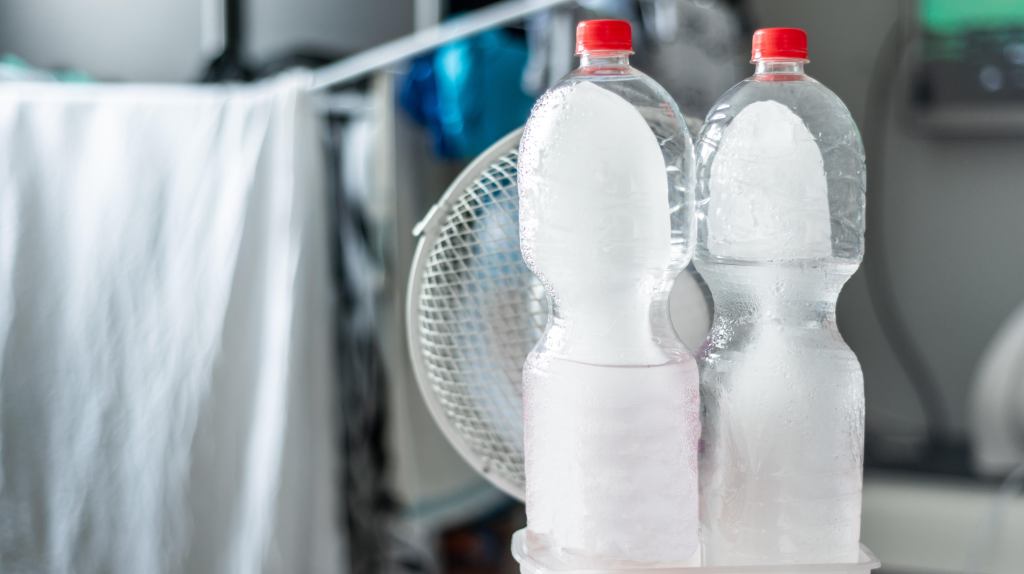Whether or not climate change ends all life on this planet or not remains an open question (I hope), but the fact is that no matter where you live you’re going to be dealing with higher temperatures at least part of the time. If you have air conditioning in your home, that means figuring out how to make it work better and more efficiently. But if you don’t have any AC at all, desperate times lead to desperate thinking — and there are plenty of “DIY” instructional videos out there purporting to show you how to build a workable air conditioner from a few relative cheap components. But do any of them actually work?
A typical DIY AC setup involves a foam cooler, some ice, some PVC pipe, and an electric fan. The idea is that if you’re moderately handy, you can throw together a survival cooling solution without spending much money. Ice is cheap, after all, and although electricity is expensive, a small fan won’t use much. However, these projects rely on water evaporation, and they’re not heat pumps — they simply cool air and then blow it into the room. So the answer to “do they work” is a frustrating “sort of.”
Your DIY options

There are many different ways to make DIY air conditioners, ranging from delightful milk carton models that act as personal coolers to more complex models involving small water pumps. Some of these require a small grasp of engineering or the ability to solder wire without injuring yourself. For those of us who regularly spend several minutes puzzling how to insert a USB cable, one of the easier approaches is the foam-cooler-and-small-AC-powered-fan concept (large buckets can work just as well), which requires some power tools but no real expertise in, well, anything aside from plugging things into your wall.
All of these DIY ACs rely on the same principle: Cool air using ice, then blow that air through a tube of some sort. In theory, you can see how this should work: When you pack a cooler full of ice and beer and head for the beach, the air in that cooler is noticeably cold every time you open it up, even if the sun is blazing down. It stands to reason that if you could pump that cool air out of the cooler into your room, it would have at least some effect on the ambient temperature.
Will a contraption like this make a noticeable dent in the room temperature? Not much of one. For a well-built DIY AC unit made from a cooler or a large bucket, you might get 1-2 degrees cooling for a very, very short time. One reason a beer cooler works is because it has a small, air-sealed space to cool down. Moving cool air out of the cooler constantly means the ice has to melt and transfer more heat energy into itself to compensate, leaving you very quickly with a puddle of water and a room that probably doesn’t feel much cooler. People sometimes think it’s working just because they can feel cold air coming out, but if it doesn’t budge the thermostat, it’s just an illusion.
On the other hand, as a close-up personal cooler? These will work. There will be a steady stream of cool air being concentrated into a tube and blown in your direction, and a DIY AC might drop the temperature in its immediate vicinity 10-20 degrees, which is noticeably cooler. That means that having one relatively close to you will offer some relief from the heat — essentially you’re building a kind of super-fan that blows slightly colder air onto you. It won’t change the overall temperature of your room, but it could make sitting in that sweatbox a little more tolerable.
The reason window air conditioners and central air systems are so expensive is due to the fact that shifting heat from one space (your torturously hot bedroom) to another (the outdoors, where it becomes nature’s problem) requires a lot of power. Some ice and a small fan are just never going to do the same job — but it might help you hold onto the fraying ends of your sanity next time a heat wave drags through the area. Considering you can build one for less than $US50 ($69), it might be a worthwhile experiment.
This article has been updated since its original publish date.

Leave a Reply
You must be logged in to post a comment.